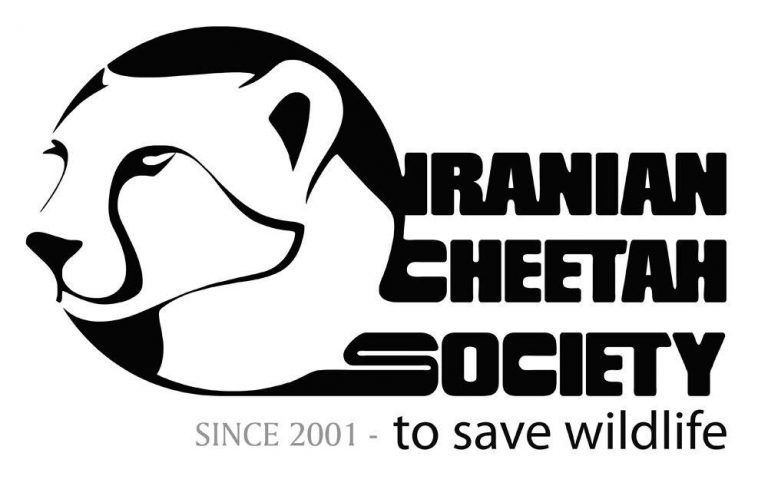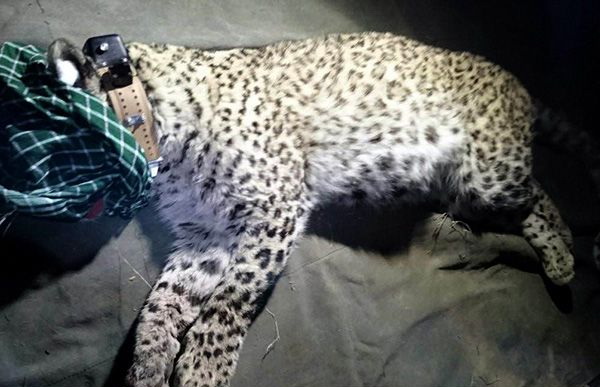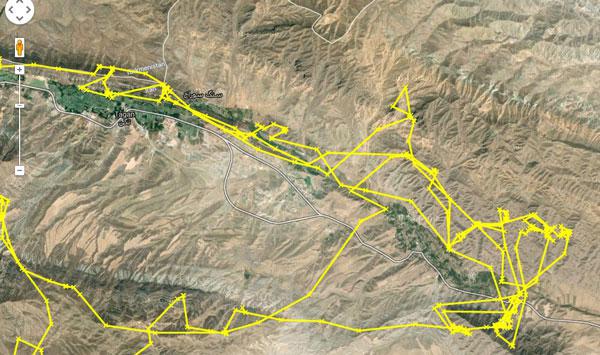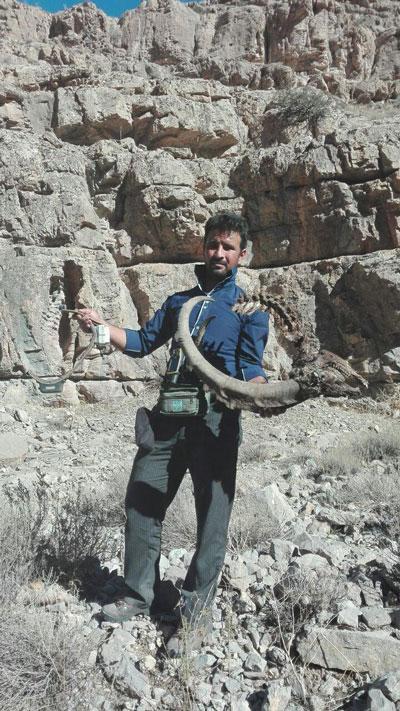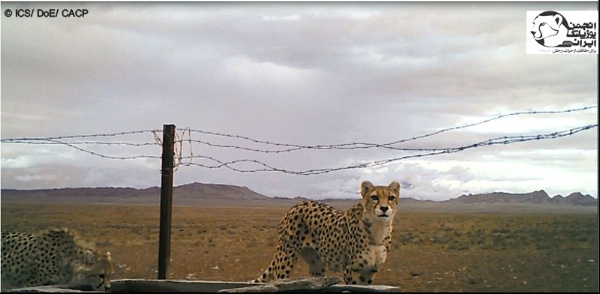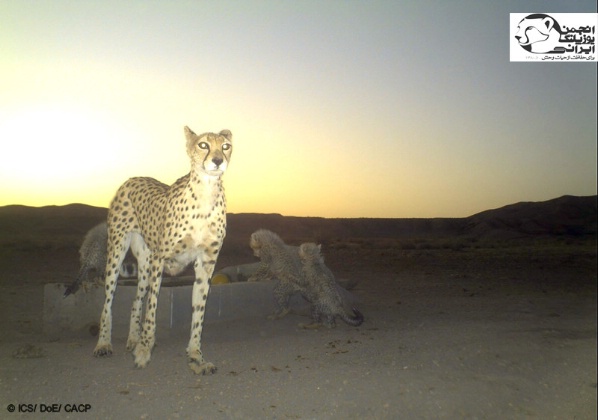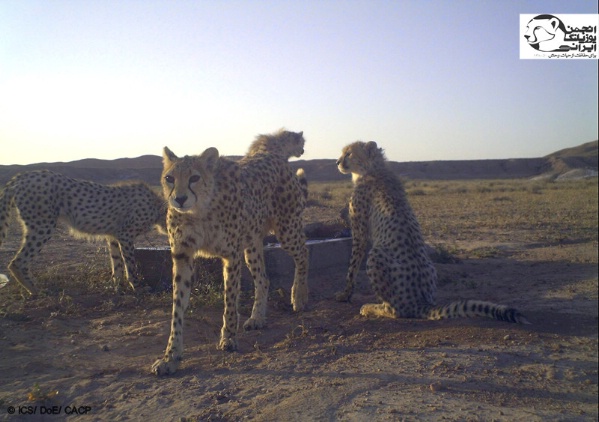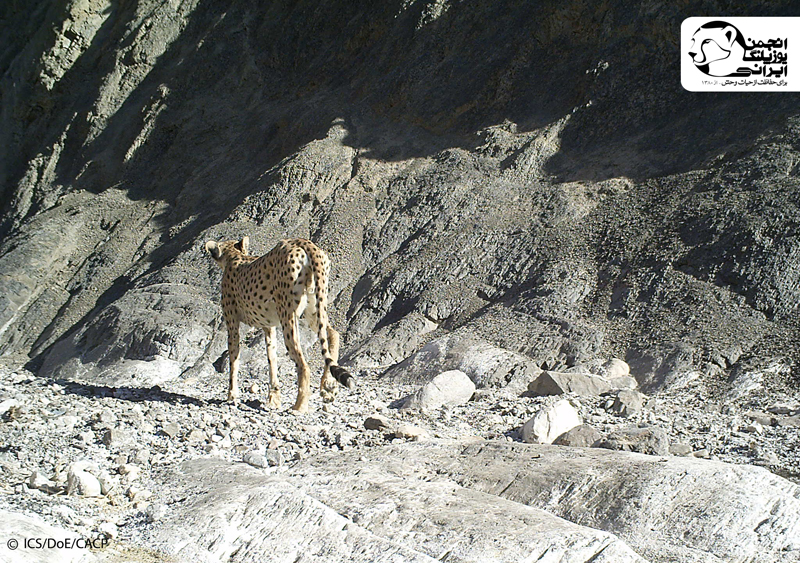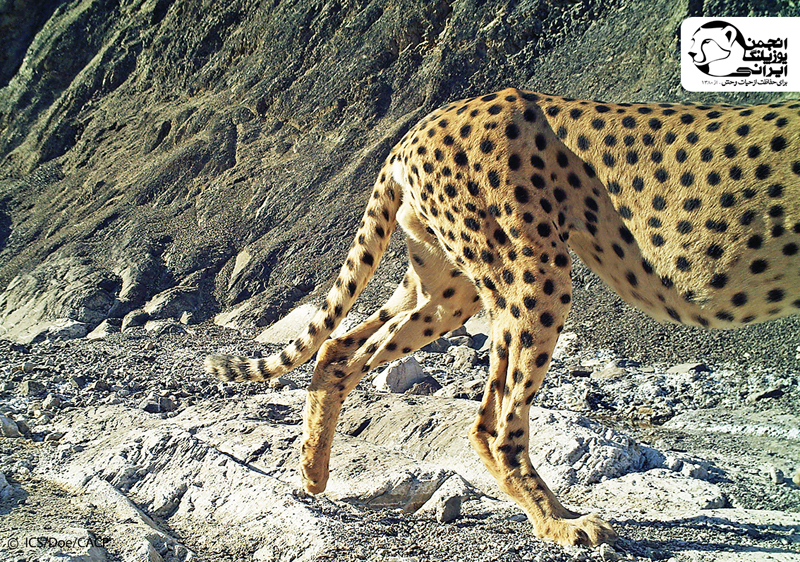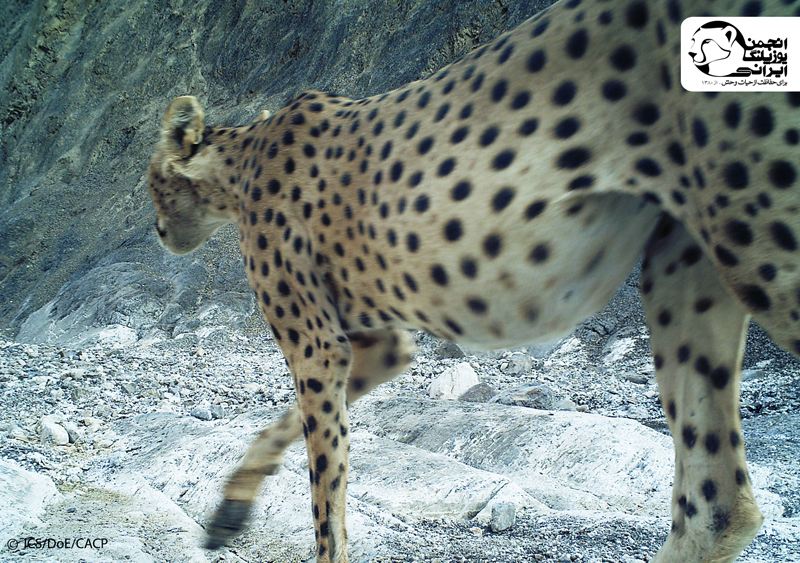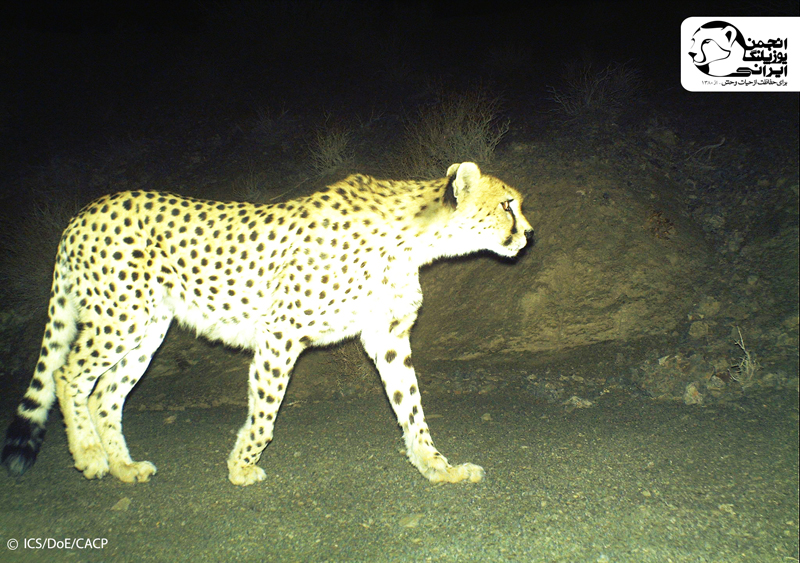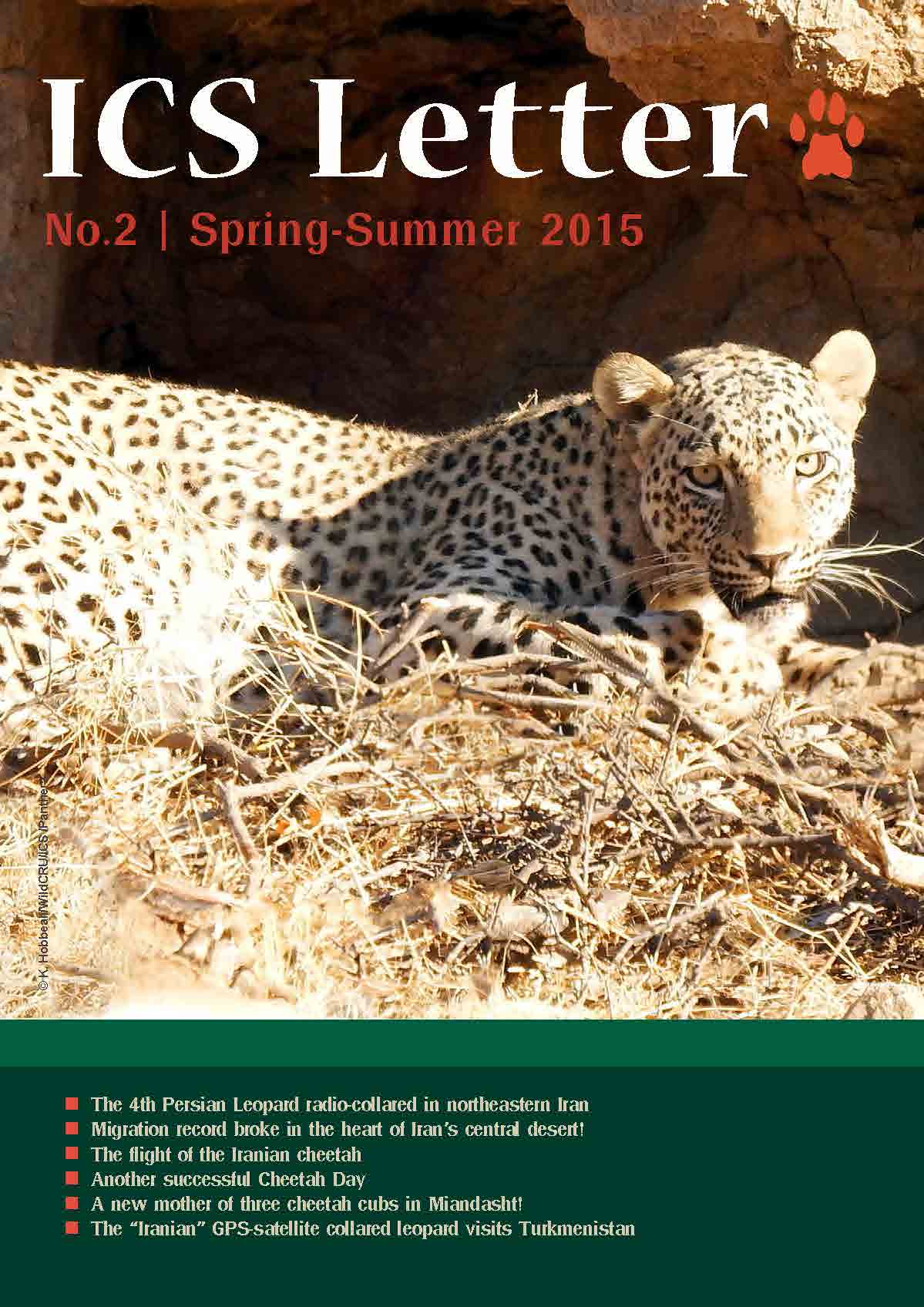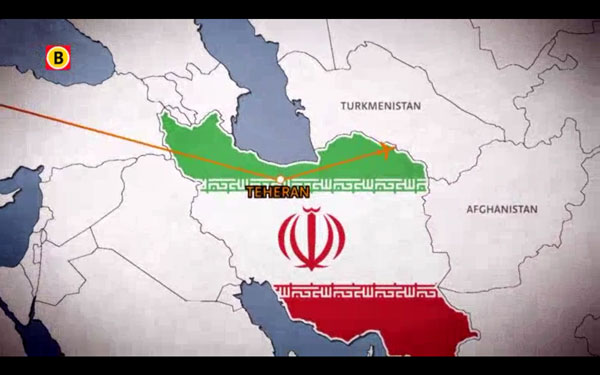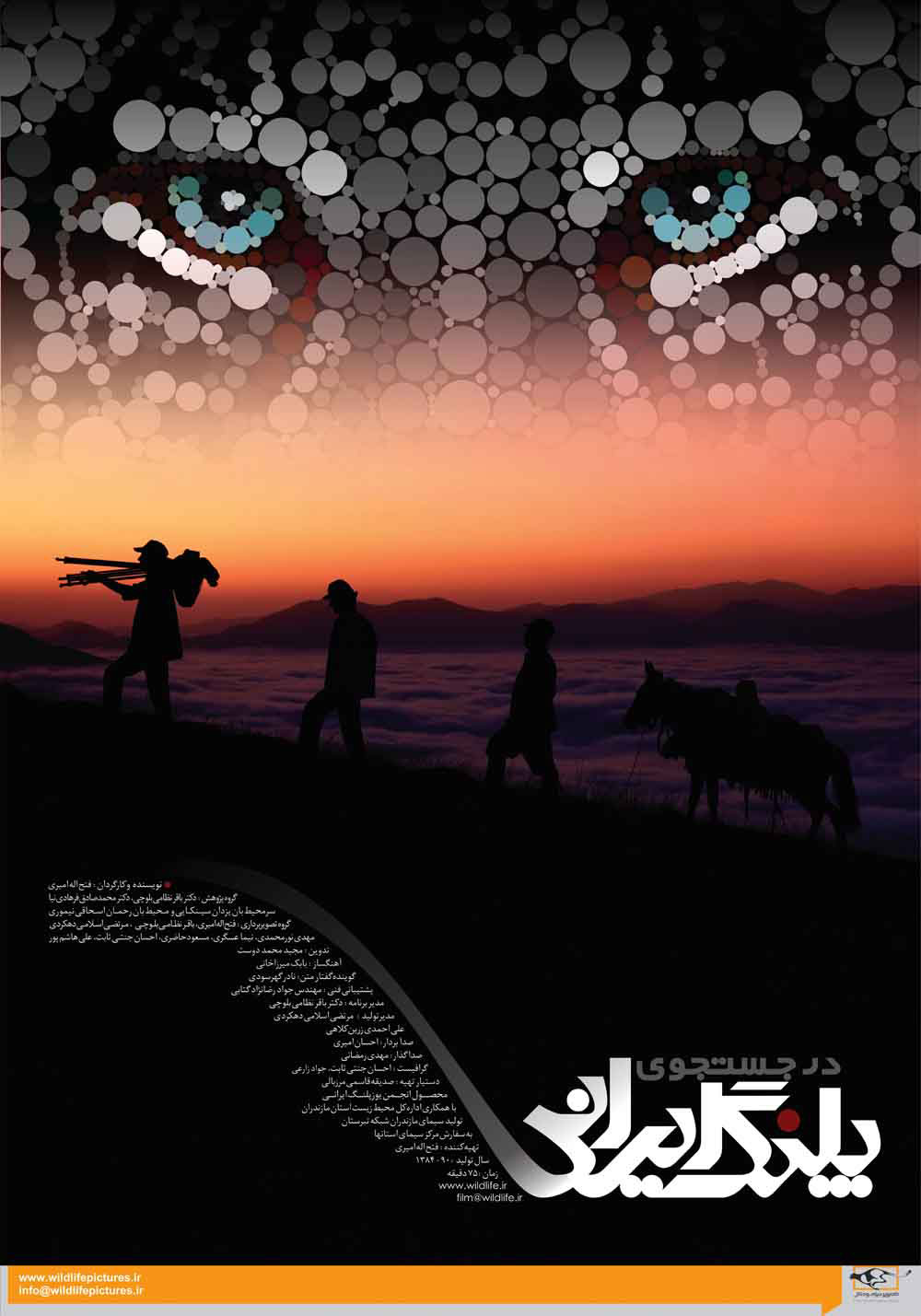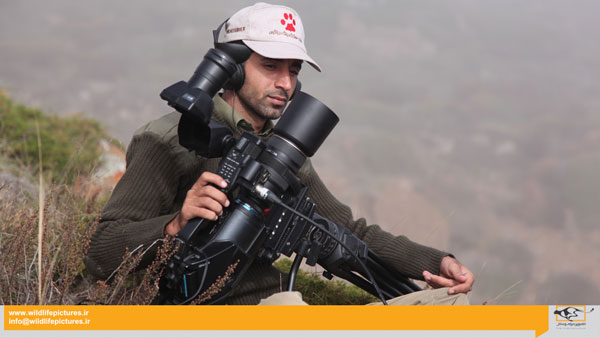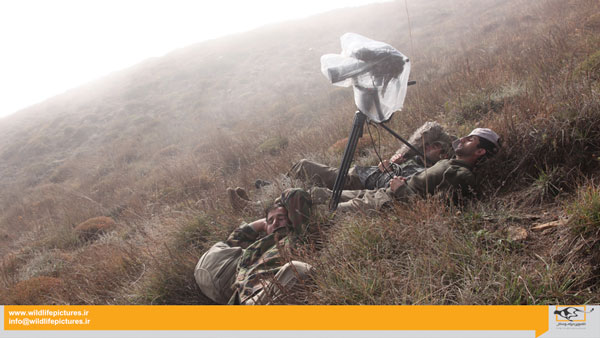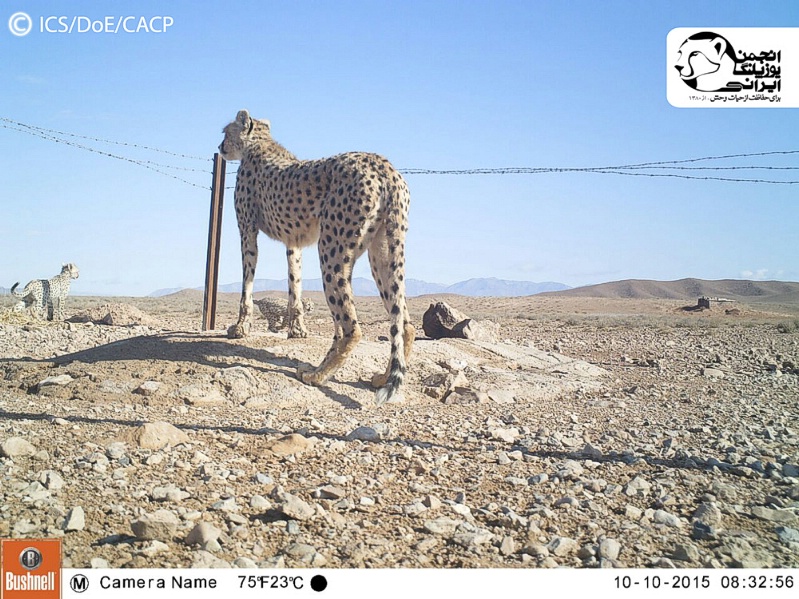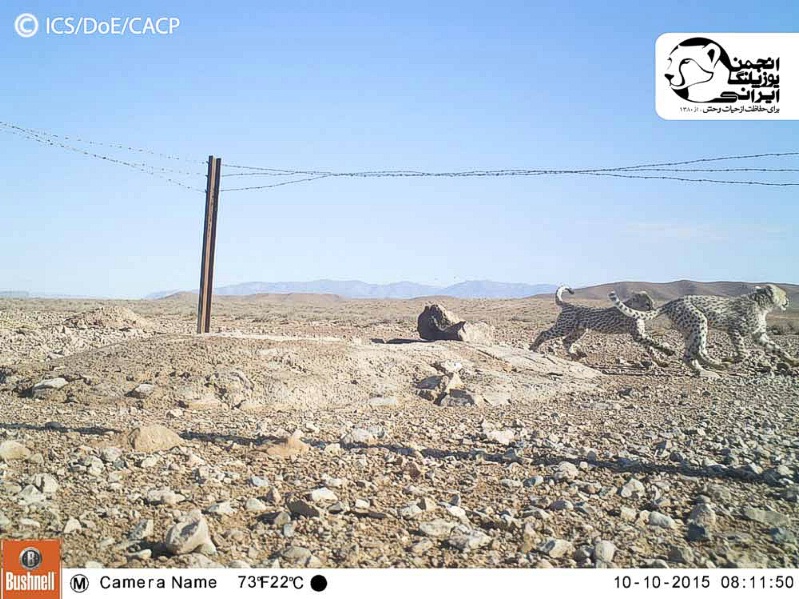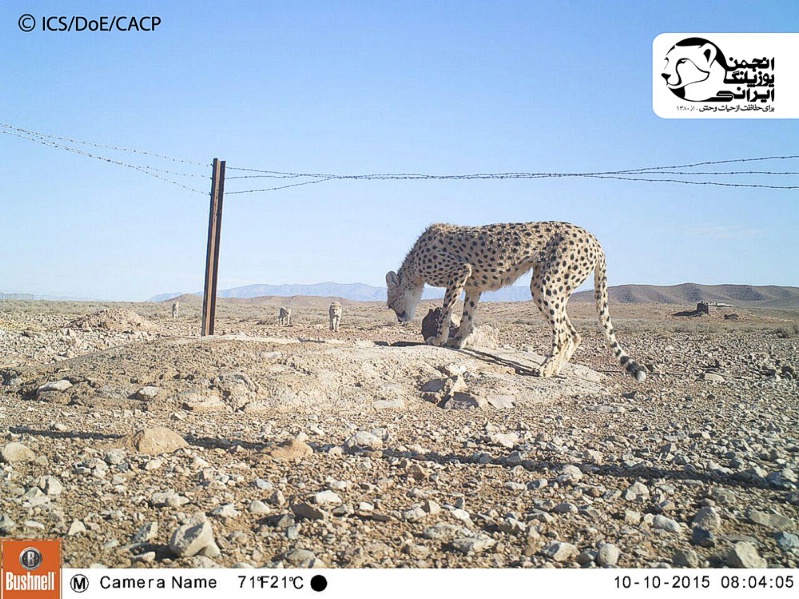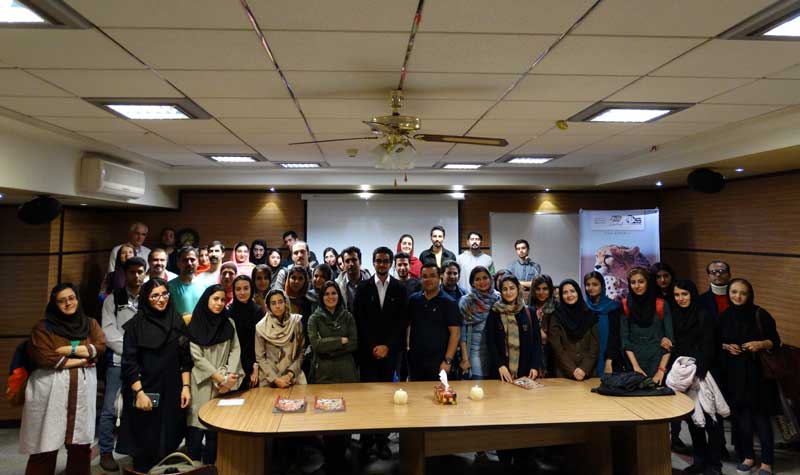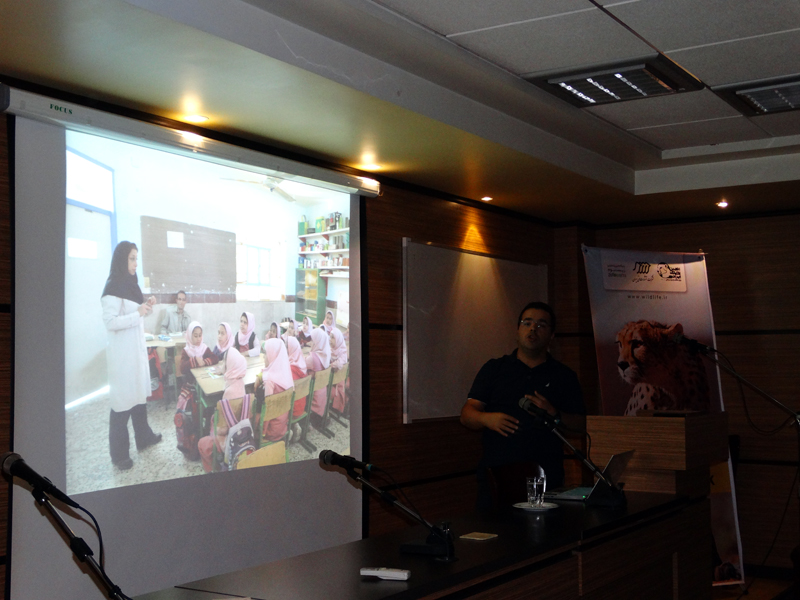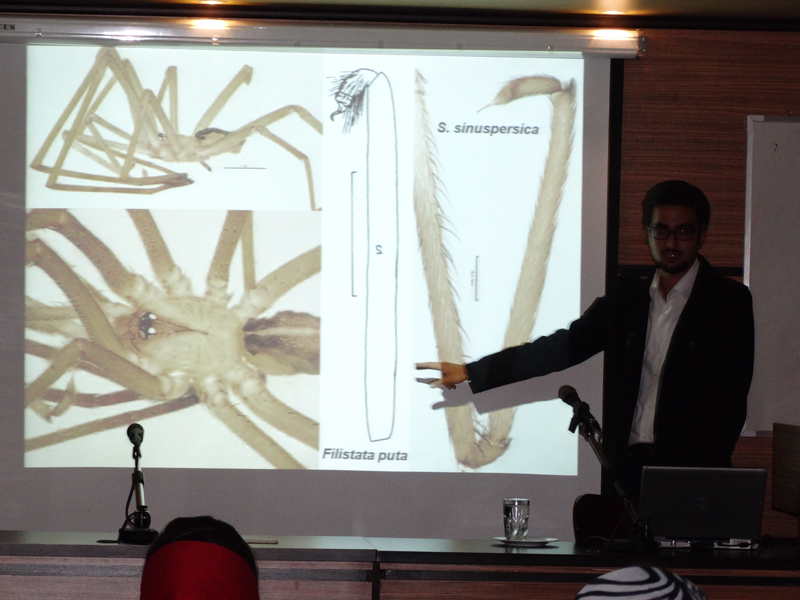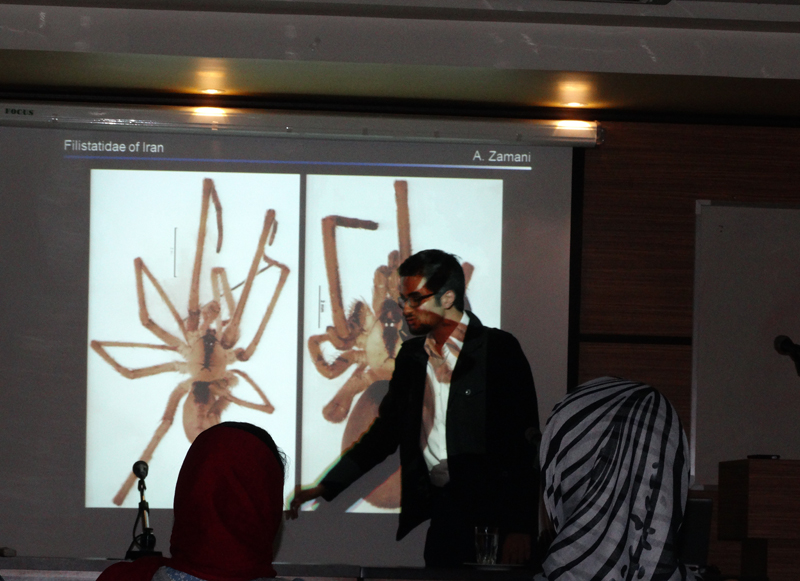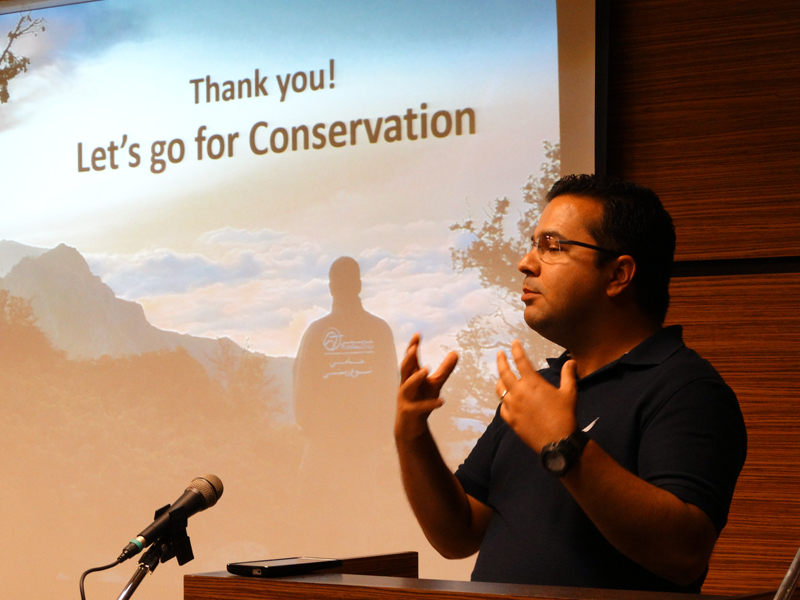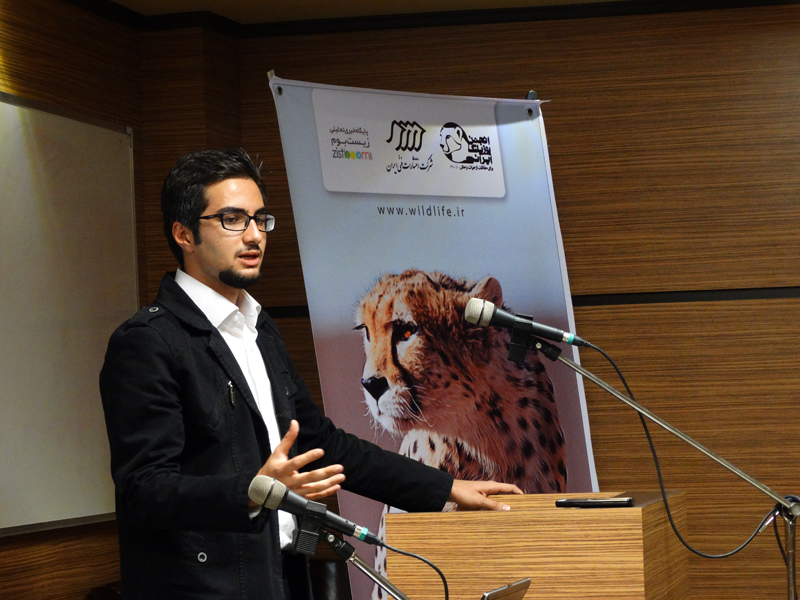On December 6, 2015, the first female Persian leopard was successfully captured during the Persian Leopard Project in Northeastern Iran. The project team carefully immobilized, examined and measured this 3-year-old female of about 40 kg. The team called her “Iran”, fitted her with a GPS satellite collar, and then released her.
Led by Mohammad Farhadinia from the Iranian Cheetah Society and WildCRU, and in collaboration with Iran Department of Environment, Panthera, and University of Tehran; this project seeks to answer a variety of conservation-oriented questions about the persistence of Endangered Persian leopards in fragmented mountainous habitats in a number of protected areas in northeastern Iran. Another four male Persian leopards have been previously fitted with collars during this study.
مدیر سایت
Updates for the Persian Leopard Project in Northeastern Iran
Led by Mohammad Farhadinia from the Iranian Cheetah Society and WildCRU, and in collaboration with Iran Department of Environment, Panthera, and University of Tehran; this project seeks to answer a variety of conservation-oriented questions about the persistence of Endangered Persian leopards in fragmented mountainous habitats in a number of protected areas in northeastern Iran.
One key aspect of this project is studying the movement ecology of Persian leopards on this rugged landscape. Five Persian leopards have been so far successfully fitted with cutting-edge GPS satellite collars, which are providing invaluable data about movement patterns, kill rates and social structure of Persian leopards. This information is also very important to increase our current knowledge about human-leopard interactions and leopard-livestock conflict.
Among the four male and one female leopards captured during this study, two of the male leopards have been monitored for one year and their collars have been successfully recovered.
The project team is now busy with an intensive camera-trapping survey and prey assessment in multiple reserves, in order to better understand the population dynamics of the enigmatic Persian leopards and patterns of predator-prey relationships. The project is expected to continue until 2017.
Kave:
Another kill belonging to one the young male leopards fitted with GPS satellite collars during this study. Wild sheep appears as one the Persian leopard’s preferred prey on this landscape.
Map showing movement patterns of one of the male leopards which is monitoring during this project. This old male has trespassed the border between Iran and Turkmenistan for several times during the past two months.
A camera-trap photograph of an unidentified male leopard within the territory of the collared male leopards.
The Iranian Cheetah Society (ICS)’s camera traps have detected a new family of two cheetahs in Miandasht Wildlife Refuge, North Khorasan province. We knew this female cheetah since 2012, when she was photographed with her three cubs in the reserve. New photographs from Miandasht show her with a male cub.
The female cheetah with her cub photographed in November 2015.
Miandasht has been intensively monitored by ICS since 2011, but this female cheetah has been absent in our photos since 2013.
The same female cheetah photographed with three cubs in 2012.
This finding shows that presently at least two female cheetahs with their cubs live in Miandasht, who are indeed mother and sister.
The family of four cheetahs re-photographed in 2013.
Therefore, at least 7 Critically Endangered Asiatic cheetahs, including 2 adult females, 4 dependant cubs, and one adult male, are present in Miandasht.
Another cheetah family photographed in Miandasht Wildlife Refuge in September 2015. The cheetah mother in this photo is one of the cubs photographed in 2011-12.
This information suggests that Miandasht is one of the best cheetah reserves in Iran, with one of the largest population of cheetahs confirmed to persist in a reserve in the country.
ICS’ monitoring program in Miandasht is running in collaboration with North Khorasan Provincial Office of Iran Department of Environment and Conservation of the Asiatic Cheetah Project, and this phase of camera-trap surveys will be continued until end of January 2016.
Another cheetah re-photographed after more than 4 years!
We previously wrote about the Iranian Cheetah Society (ICS)’s recent camera trapping survey in Naybandan Wildlife Refuge, which revealed another long-distance movement by a male Iranian cheetah, named as “Pouyan”
In the Naybandan survey, our camera traps photographed three different male cheetahs in multiple occasions across the reserve. Besides “Pouyan”, one of the males was identified as “Arash”, the cheetah whose photograph won the BBC Wildlife Magazine’s prize in 2014 . ICS researchers could eventually identify the third cheetah, known for us as “Navid”!
Navid was photographed for the first time by a team from National Geographic in 2011. But he missed in the following surveys in Naybandan Wildlife Refuge. Re-photographing Navid after 4 years is indeed very good news, showing our poor knowledge about the survival and population dynamics of Asiatic cheetahs in Iran. Our survey efforts in Naybandan are running in collaboration with South Khorasan Provincial Office of Iran Department of Environment, Conservation of the Asiatic Cheetah Project, and Part Wildlife Discovery Institute.
A camera-trap photograph of “Arash” from Naybandan Wildlife Refuge, fall 2015
Camera-trap photograph of “Pouyan” in Naybandan, fall 2015
“Navid” was photographed in Naybandan by a team from National Geographic in 2011
The new photo from “Navid” by ICS camera traps in Naybandan Wildlife Refuge, fall 2015
Comparison of Navid’s coat pattern from pictures obtained in 2011 and 2015
A camera-trap photograph of “Arash” from Naybandan Wildlife Refuge, 2014.
A Persian marathon to send a message of peace and friendship from Iran is going to gather participants from across the globe to “run4 fun”! The event is underway and aims to gather as many participants as possible to engage in achieving this goal. As a supporter, each participant will get acquainted with the Persian culture and history, as well as Iran’s spectacular biodiversity.
The Iranian Cheetah Society (ICS), together with the Iran Tourism Organization and several local authorities, supports this event. The event is going to contribute in fundraising for ICS conservation activities and creating awareness to the last population of the critically endangered Asiatic cheetah. You can find more information about the event and how to help us in saving the Iranian cheetahs here.
The 2nd issue of ICS Letter, the English newsletter of the Iranian Cheetah Society (ICS) just released. Our top story features the new long-distance movement of a cheetah discovered in central Iran. Also highlighted are: another Persian leopard radio-collared in north-eastern Iran; the flight of the Iranian cheetah; another successful cheetah day; a new mother of three cheetah cubs photo-captured; the Iranian GPS-satellite collared leopard visits Turkmenistan.
ICS’ Persian Leopard Project aired on Dutch and Belgium TV channels
During the Persian Leopard Project in Northeastern Iran, a new leopard was successfully radio-collared very recently . This young male, the 4th leopard that has been equipped with GPS-satellite collars in this project, was anestethsized by Jacques Kaandorp, a well-known vet from Beekse Bergen Safari Park, the Netherlands. During his 2-week stay in Iran, Jacques was accompanied by a small group of Dutch documentary makers who filmed the project. Two short episodes from this documentary was aired on Dutch and Belgium TV channels recently. You can watch the first episode in Dutch here .
Led by Mohammad Farhadinia, the Persian Leopard Project in Northeastern Iran is a collaborative conservation-based research project between University of Oxford’s WildCRU, ICS, Iran Department of the Environment, and Panthera.
The Iranian Cheetah Society (ICS)’s award-winning documentary “In search of the Persian leopard” won the Best Foreign Feature Film award at Wildlife Conservation Film Festival (WCFF) in New York.
Produced by Fathollah Amiri (Wildlife Pictures Institute) in collaboration with ICS and Iran National TV, this documentary features the story of a team of ICS biologists working in a rugged high-attitude reserve in northern Iran where intensified human-leopard conflict has resulted in heavy persecution of this enigmatic large cat. You can watch the movie online here.
‘In search of the Persian Leopard’ has already several national and international prestigious awards, including the Best Documentary award at Iran’s International Documentary Film Festival (Fajr), making it the most outstanding wildlife film ever in Iran.
The cheetah family photographed again in Miandasht!
The Iranian Cheetah Society’s camera-traps have successfully photographed this family of a female cheetah with three cubs in Miandasht Wildlife Refuge during October 2015. This cheetah family was first photographed in August 2015, and we are thrilled to find out that they are still doing well.
The female cheetah has been photographed in different occasions since the first time she was identified in 2013 as a cub. Miandasht Wildlife Refuge in northeastern Iran is one of the key cheetah reserves in the country, and holds the majority of cheetah reproduction records since 2011. The Iranian Cheetah Society is monitoring the cheetah population in this reserve since 2004, in collaboration with North Khorasan Provincial Office of Iran Department of the Environment and Conservation of the Asiatic Cheetah Project.
Three years with the WildTalk: Iranian marine mammals and spiders featured in the 23rd seminar
The Iranian Cheetah Society celebrated the 3rd anniversary of WildTalk Seminars, with two presentations about conservation of marine mammals of Iran and recent discoveries about a family of Iranian spiders, respectively.
In the first presentation, Hamed Moshiri from the Plan 4 the Land Society (P4L) presented some the conservation activities his NGO is involving in southern Iranian waters since 2009. Hamed showed how his team is using photo-identification techniques to identify estimate the population size of several species of dolphins. He also presented some findings from their ongoing study on the social behavior and food preferences of the dolphins. Conservation education campaigns are also one of the key complements of the work that P4L is doing in southern Iran.
Alireza Zamani introduced his work on family Filistatidae (also known as crevice weavers) in Iran in the second presentation. These nocturnal spiders typically build a silken tube in a circular pattern around the entrance of a crack, often among rocks or dead woods. Alireza updated the attendants with the most recent review of this spider family from Iran, in which to date at least 11 species from 4 genera has been discovered in the country.
In collaboration with Entesharat Fanni Publications, the Iranian Cheetah Society runs the WildTalk Seminar every two months and invites Iranian researchers and conservationists from different organizations to present their efforts to save the Iranian fauna and flora.
